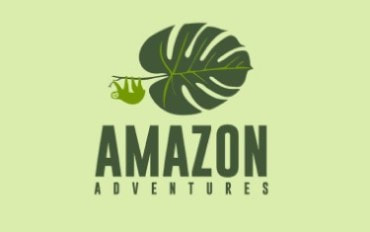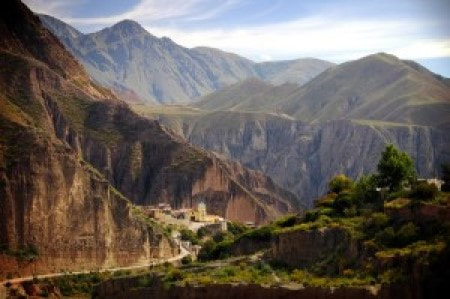Salta ToursThe area around Salta represents the 10% of Argentina but encompasses half of the history of the country. From the Incas, and other local cultures - which are characterized by the excellent adaptation to the highlands-; to the Spanish domain (this region holds the most ancient traces of Spanish heritage) and Independence days - which had a strong imprint on the culture and lifestyle of the people living in the area.
|
One of the most fascinating aspects of a visit to the Northwest area is the chance to mingle with the native population, some of the friendliest people on Earth. Since the rigorous climate up the mountains has discouraged permanent settlements, the local inhabitants preserve practically intact their ancient customs and traditions. Their polychromatic dresses, their expressive artwork and handicrafts, their music, their colorful markets and street fairs and delicious gastronomy are eloquent expressions of the soul of these people and their love for PACHAMAMA (Mother Earth). Some of the most spectacular geological formations on Earth are to be found in the impressive landscapes, which encompass the northwestern Argentine provinces. Not only we include this gorgeous formations but also most of the most amazing deserts and high altitude lakes (comparable - and sometimes superior to some extent- to Atacama and Uyuni).
Here are some sample itineraries to entice you, though we can customize something to suit your interests:
|
Basic Salta Area
Here is a sample itinerary, using group day tours. We can make it shorter if you don't want to do all of the tours. If you want private tours, we can overnight in some of the small towns so you don't have to go back to Salta each night. DAY 01. SALTA Arrival and reception at the airport. In the afternoon, we go on a walk through the city and visit the MAAM (Museum of High Mountain Archeology). Max. Altitude: 1.152 MASL (3.779 ft.) DAY 02 - Humahuaca Gorge Today we explore Jujuy Province to get to know the Humahuaca Gorge, a Cultural and Natural Heritage Site. On our way, we make stops at typical towns such as Purmamarca, Tilcara, Uquía and Humahuaca. On the way back, we visit Maimará, to admire the Painter’s Palette. Travelled distance: 476 km (295 miles) Travel time: 12 hours Max. Altitude: 3.012 MASL (9.881 ft.) DAY 03 - CAFAYATE 368 km Home of the Wines in Salta Departure towards the Calchaquíes Valleys passing by Del Obispo Slope, Del Tin Tin Stretch, Los Cardones National Park and De Las Flechas Gorge, with its curious formations. Arrival at Cafayate. Travelled distance: 320 km (199 miles) Travel time: 11/12 hours Max. Altitude: 3.348 MASL (10.984 ft.) DAY 04 - We visit Cafayate and then, depart towards Salta, visiting De las Conchas Gorge, which is a result of wind and water erosion. Transfer to the airport. Travelled distance: 197 km (122 miles) Travel time: 5 hours Max. Altitude: 1.683 MASL (5.521 ft.) Humahuaca + JujuyDay 1 Salta.
Arrival and reception at Salta’s airport and transfer to the hotel. In the afternoon, the city of Salta awaits us to discover it by a walk through its streets, churches and colonial buildings. On the way, we visit the MAAM (High Mountain Archeology Museum), responsible for spreading and preserving the ‘Children of Llullaillaco’, one of the most important archaeological discoveries of the last decades. The Children of Llullaillaco are the names with which three Incas children are known. They have been exceptionally conserved by around five hundred years and were found at 6739 MASL (22.109 ft.), near the top of the Llullaillaco Volcano, located in western Salta’s province. Maximum altitude: 1.152 MASL (3.779 ft.) Day 2 Salta. B Today we visit De Las Conchas Gorge, with its curious formations such as the Amphitheatre and the Devil´s Throat, produced by the erosion of wind and water. Arrival at Cafayate, city tour and visit to the museum. Total distance: 394 km (245 miles) Travel time: 11 hours Maximum altitude: 1.660 MASL (13.681 ft.) Day 3 Salta / Purmamarca. B Early in the morning, we depart towards Del Toro Gorge in order to discover San Antonio de los Cobres town. After lunch (not included), we continue through the Puna up to Salinas Grandes, then descend through De Lipan Gorge to Purmamarca, at the foot of (De los Siete Colores Hill). Total distance: 320 km (199 miles) Travel time: 10 hours Maximum altitude: 4.170 MASL (13.681 ft.) Day 4 Purmamarca / Iruya. B D Today we enjoy Humahuaca Gorge, a Natural and Cultural Heritage Site, visiting typical and colourful villages such as Tilcara, Uquía and Humahuaca. We continue through a mountainous path, until we reach Abra del Cóndor, the highest place on the way to Iruya. Arrival at that magical town, located at 2780 MASL (9.120 ft.), within the Yungas Biosphere Reserve. Our first impression is that Iruya is a town hanging from the mountains. Total distance: 143 km (89 miles) Travel time: 7 hours Maximum altitude: 4.000 MASL (13.123 ft.) Day 5 Iruya / Salta. B
In the morning, we depart on our return to Salta. Once we reach Humahuaca, we take a detour in order to get to know El Hornocal. This is a hill in which it is possible to see 33 colour shades. On our way to Salta, we stop at Maimará to admire the Painter’s Palette. Total distance: 322 km (200 miles) Travel time: 8/9 hours Maximum altitude: 4.380 MASL (14.370 ft.) Day 6 Salta. B Morning at leisure. At due time, transfer to the airport. Maximum altitude: 1.152 MASL (3.780 ft.) |
Secrets of
Humahuaca Gorge Day 1 Salta.
Arrival and reception at Salta’s airport and transfer to the hotel. In the afternoon, the city awaits us to explore Salta by a walk through its streets, churches, colonial buildings and the MAAM (Museum of High Mountain Archaeology), which is in charge of sharing and conserving the ‘Niños del Llullaillaco’. Maximum altitude: 1.152 MASL (3.779 ft.) Day 2 Salta / Purmamarca. B L We leave towards the Humahuaca Gorge, Natural and Cultural Heritage Site, in order to share a community-based tourism experience, in which we will be both actors and guests. According to availability, we will be able to discover the secrets of the northern gastronomy thanks to a local chef who will receive us in a farm located at the foot of Del Lipán Slope, to give us a regional cooking lesson or just enjoy a different afternoon in the house of someone very special. With this person, we will prepare and drink tea, using herbs that are native from the gorge and Jujuy’s Puna, with bread-derived products that we will learn how to cook while we learn the history of that community. Accommodation in Purmamarca. Travelled distance: 156 km (96 miles) Travel time: 3 hours Maximum altitude: 2.300 MASL (7.045 ft.) Day 3 Purmamarca / Tilcara. B We begin this day stopping at Tilcara to visit the Pucará, which is the town’s ancient fortress, and then continue towards Humahuaca, where we will have time to explore the town and have lunch (optional). In the afternoon, we visit El Hornocal, best-known as the Fourteen Colours Hill, which is a colour palette that totally deserves being contemplated. After that, we return through the Gorge to Tilcara. Travelled distance: 172 km (106 miles) Travel time: 10 hours Maximum altitude: 4.380 MASL (14.370 ft.) Day 4 Tilcara. B L D In the morning, we go to Uquía in order to visit quite a special winery. Once there, we meet the host and on board 4x4 we will ascend to visit high altitude vineyards. Among breath-taking landscapes we cross Moya’s vineyard located 3.329 MASL in order to reach the highest wine cellar in the world, which is situated 3.640 MASL and from where every August the wines from the previous year are transferred on the back of llamas in order to store them in bottles. It is an abandoned mining cave that was transformed into a wine cellar which presents the ideal natural conditions to the store, ideal for the maturation of high altitude wines. We choose the wine to pair lunch and then we descend to taste local products. In the evening, we enjoy a dinner in a local restaurant in order to continue discovering the Andean cuisine. Travelled distance: 70 km (43 miles) Travel time: 6-7 hours Maximum altitude: 3.640 MASL (11.942 ft.) 29/06/2022 218 Day 5 Tilcara / Salta. B Time at leisure. At due time, transfer to the city of Salta. Maximum altitude: 1.200 MASL (3.937 ft.) Classic Northwest TourDay 1 Salta.
Arrival and reception at Salta’s airport and transfer to the hotel. In the afternoon, the city of Salta awaits for us to explore it. During the tour, we visit the MAAM (High Mountain Archeology Museum), responsible for spreading and preserving the ‘Children of Llullaillaco’, one of the most important archaeological discoveries of the last decades. Maximum altitude: 1.152 MASL (3.779 ft.) Day 2 Salta. B Today we explore Humahuaca Gorge in the Province of Jujuy, Natural and Cultural Heritage Site. The tour includes stops at Purmamarca, Tilcara with its Pucará, Uquía and Humahuaca. On the way back to Salta, we stop at Maimará to admire Paleta del Pintor (Painter´s Palette). Total travelled distance: 476 km (296 miles) Travel time: 12 hours Maximum altitude: 3.012 MASL (9.882 ft.) Day 3 Salta / Cachi. B We leave the city of Salta to begin our tour through Calchaquíes Valleys. During the trip, we stop at Del Obispo Slope, Tin Tin Straight and Los Cardones National Park. We arrive at Cachi where we stay and we enjoy the afternoon. Total travelled distance: 163 km (101 miles) Travel time: 4 hours Maximum altitude: 3.348 MASL (10.984 ft.) Day 4 Cachi / Cafayate. B Morning at leisure. Departure towards Cafayate, driving along National Route Nº40, passing by Seclantas, Molinos, Angastaco and De Las Flechas Gorge, with its curious formations caused by water and wind erosion. Finally, arrival at Cafayate. Total travelled distance: 157 Km (97 miles) Travel time: 6 hours Maximum altitude: 2.220 MASL (7.283 ft.) Day 5 Cafayate. B In the morning, we explore De Las Conchas Gorge, where the action of wind and water have created curious formations such as the Amphitheatre and the Devil’s Throat. In the afternoon, we visit a winery of the area, where we explore its installations and make a wine tasting. Finally, we visit the Vine and Wine Museum in order to complement the knowledge about the wines’ processes. Maximum altitude: 1.683 MASL (5.522 ft.) Day 6 Cafayate / Tafí del Valle. B We leave Cafayate towards Tafí Del Valle. On the way, we visit the Quilmes Ruins (an aborigines’ citadel), where the largest pre-Columbian settlement ruins of Argentina are located. We continue and then, accommodation at Estancia Las Carreras. Total travelled distance: 127 Km (79 miles) Travel time: 3 hours Maximum altitude: 3.042 MASL (9.980 ft.) Day 7 Tafí del Valle / Tucumán. B Morning at leisure to enjoy the activites offered by the Estancia. Departure towards Tucumán along De Los Sosa Gorge. Before going to the airport, we have a brief city tour. Total travelled distance: 106 km (66 miles) Travel time: 3 hours Maximum altitude: 1.900 MASL (6.234 ft |



